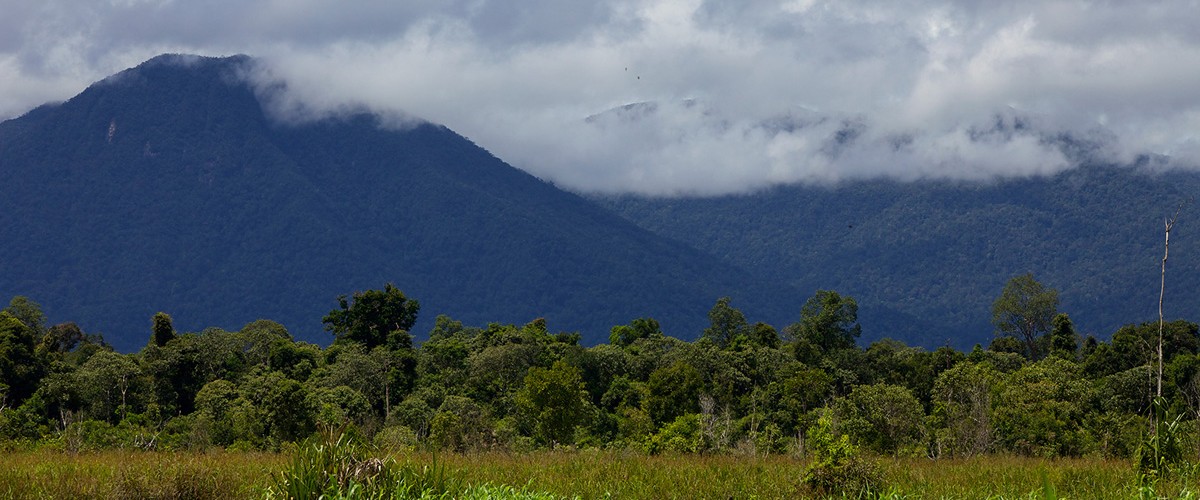By Dr. Erin Kane, Post-Doctoral Researcher, Boston University and GPOCP
Imagine, if you will, that you have traveled halfway around the world with the intention of studying a large, mostly solitary, primate. You have prepared for this moment for years, and there you are, finally, in the Bornean rainforest. You plot out your path each morning with the intention of happening upon an orangutan, catching them shaking branches or noisily eating food, and spending the whole day watching them. You will collect their urine. You will collect their fecal samples. You will count exactly how many times they put food in their mouths, and how many times they process that food with their incisors or their molars. You will sit below them while they rest, you will watch them use leafy branches as umbrellas or sun shades, you will watch them carry their babies and swing between trees in the canopy.
 |
|
This long tailed macaque was happy to show himself, while orangutans took a bit more time to find.
|
Unfortunately, as it turns out, orangutans don’t necessarily share my same grand visions. Maybe there’s a tree fruiting outside the study area and they are all happily hanging out there. Maybe they’re napping quietly and I’m walking right under them without even noticing. Maybe there’s some vast pongidae conspiracy and they’re laughing and hiding, watching me pick leech after leech off of my trousers while I tromp around the difficult terrain of the peat swamps and mountains. Sometimes orangutans are just not that easy to find!
 |
|
Erin encountered many gibbons while searching for orangutans. This one she photographed in the local forest in Ketapang.
|
It’s not like the forests are empty. On the contrary – I have become an expert at hearing a faint rustling of branches a hundred meters off the trail and running to it in joyful anticipation, only to find a long tailed macaque. I will see orange fluff overhead, train my binoculars on it, and find a tail. Congratulations: I’ve just discovered a red leaf monkey. Fruit falling from a tree? It’s actually a pair of gibbons. Faced with such frustration, I start rewriting the lyrics to Les Misérables: “On my own, pretending they’re above me … all alone, I walk them to their night nests. In the sunlight, I find their fecal samples – and all I see is them and me; I’m publishing this research!”
 |
|
Erin and new Research Assistant, Yogi, excited to meet orangutans Bibi and Bayas for the first time.
|
Dejected after a solid week of fruitless orangutan searching, I return to camp one afternoon to learn that our newest field assistant (less than two weeks on the job), Yogi, has found a mother-infant pair! And tomorrow, I am going to go follow them! Everyone’s awake at 3:00 AM to get to the nest before the pair wakes up. Walking out to the nest, my path is lit by the faint glow of bio-luminescent mushrooms. The sun comes up slowly, the forest brightens, the gibbons start singing their morning duets, and I see movement in the nest. I train my binoculars on the woven branches, and there it is! A tiny baby orangutan peers down. The orangutans are real – and I have finally met them!
 |
|
Erin was also able to meet the famous Walimah while at Cabang Panti. Photo credits Dr. Erin Kane.
|






